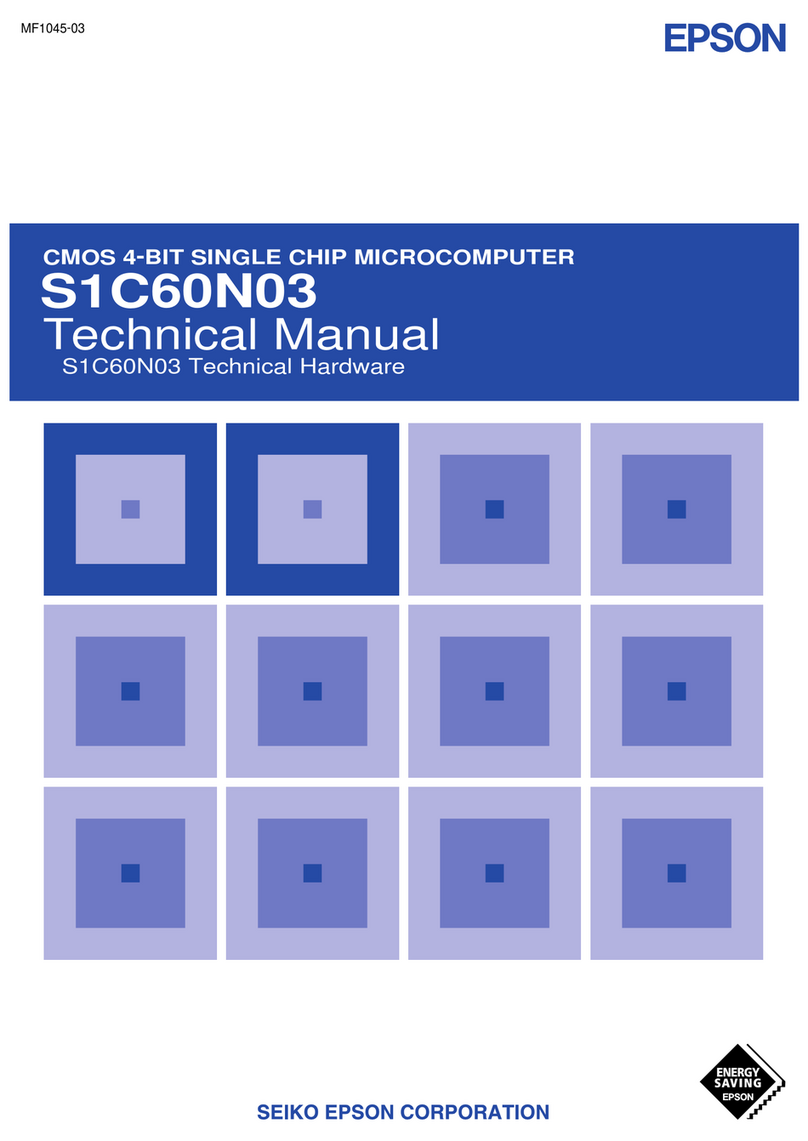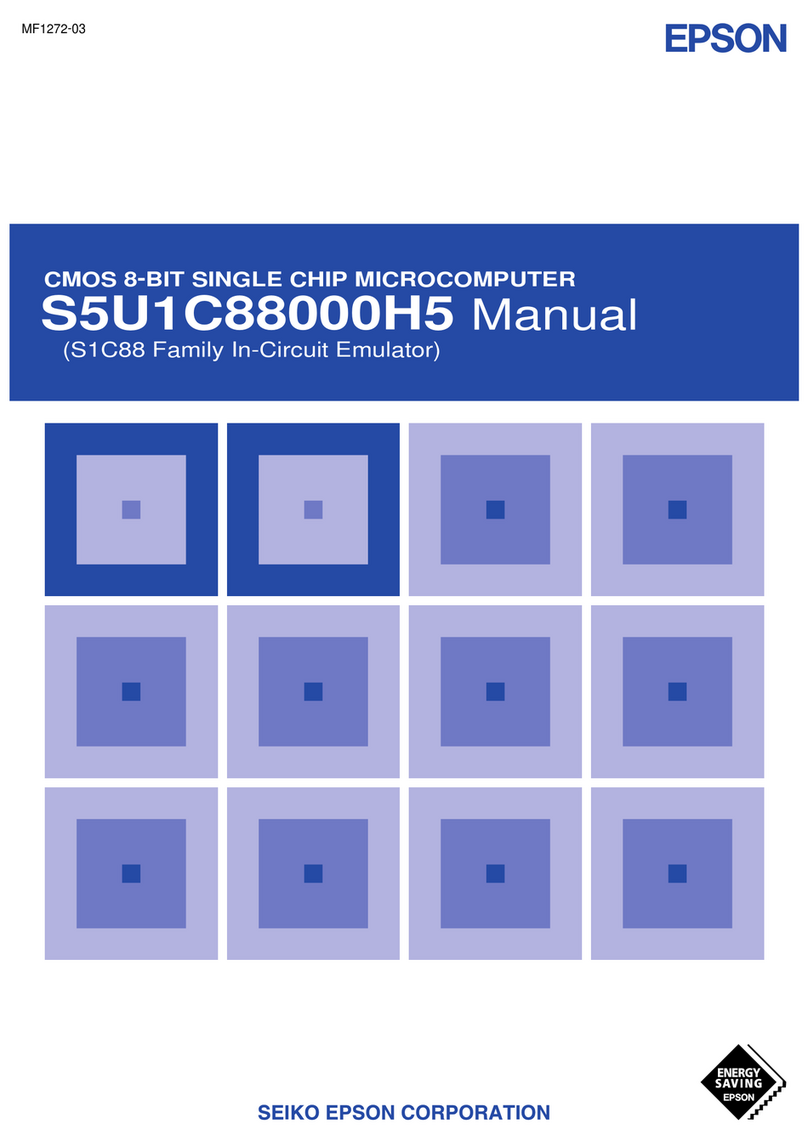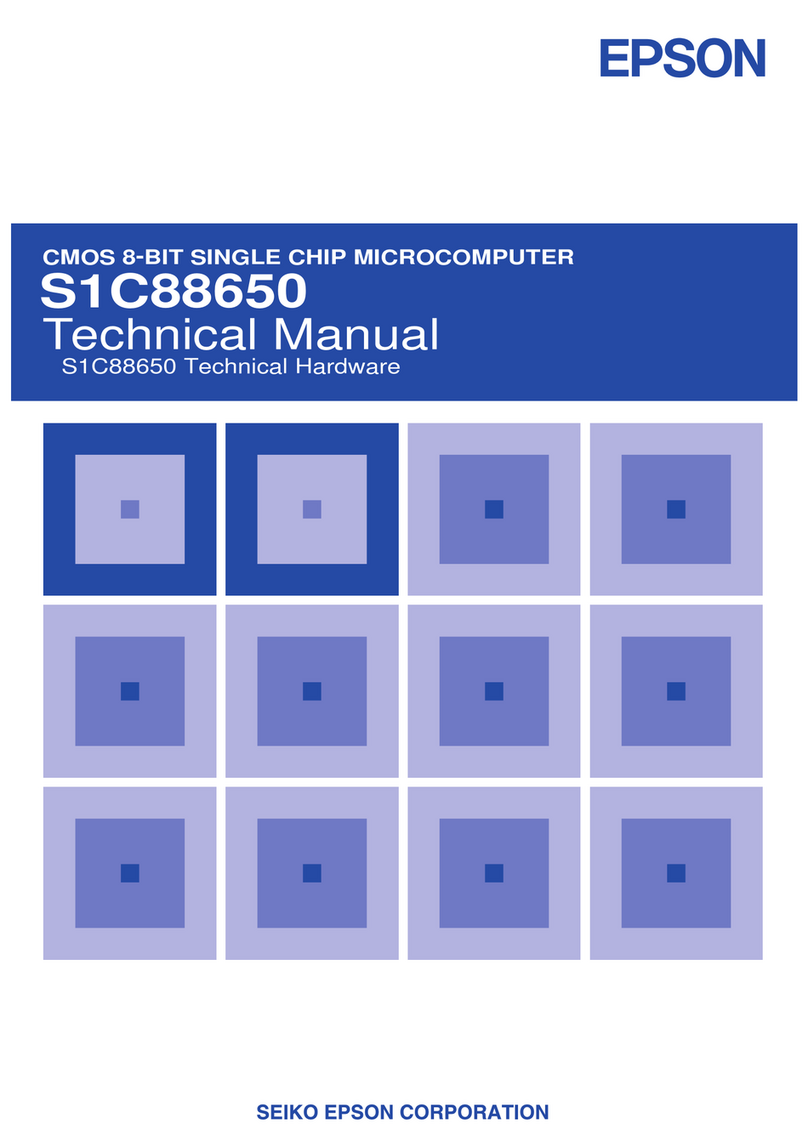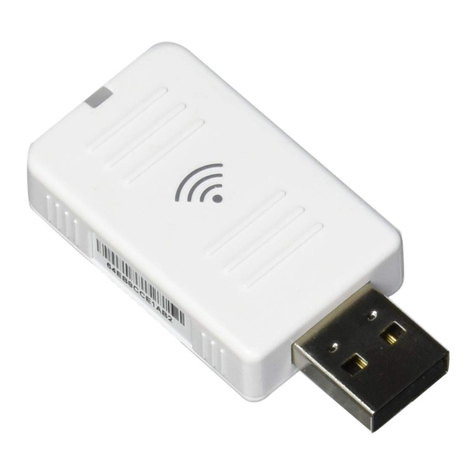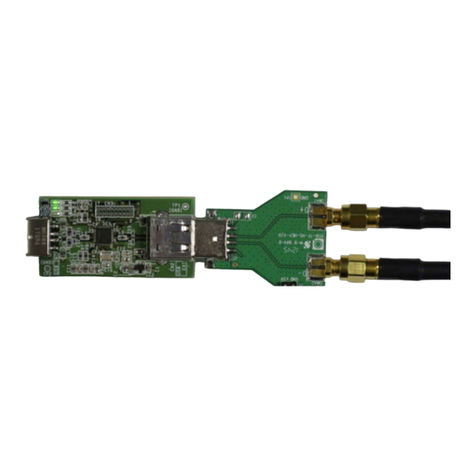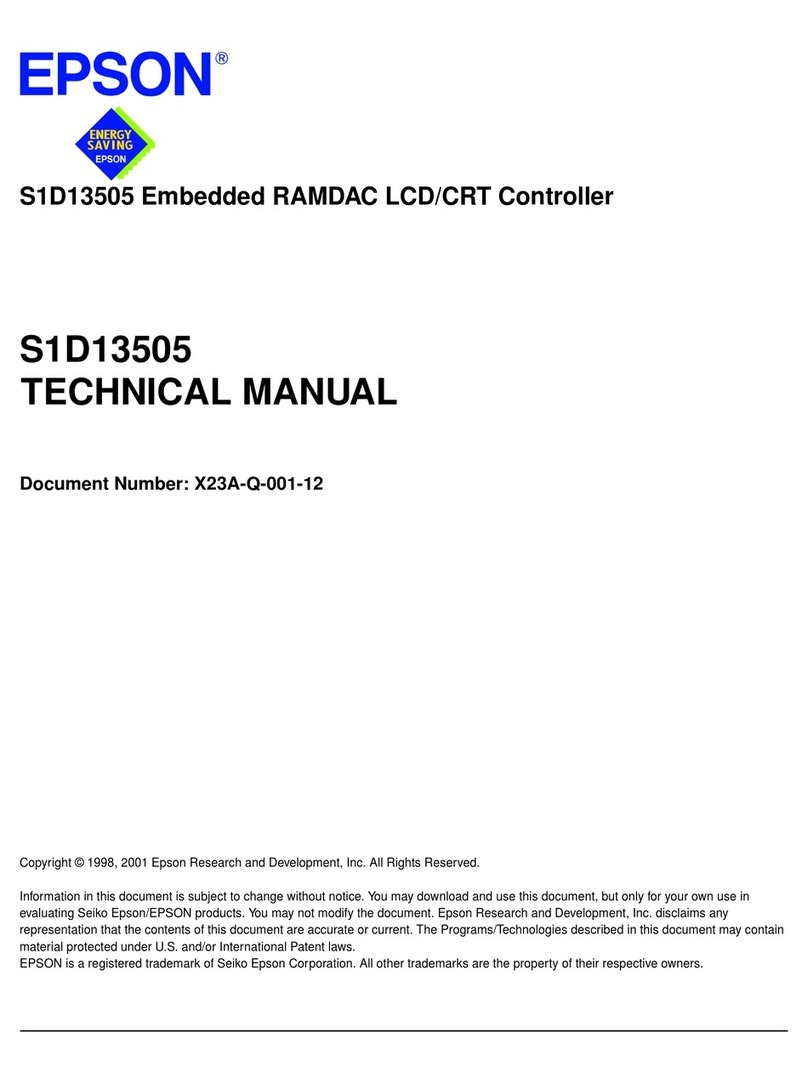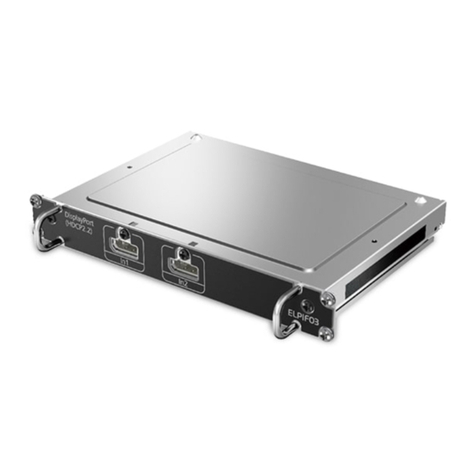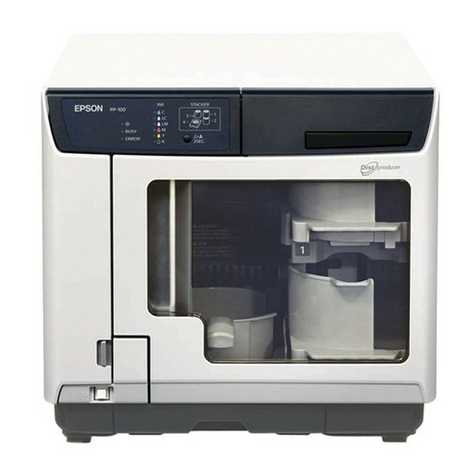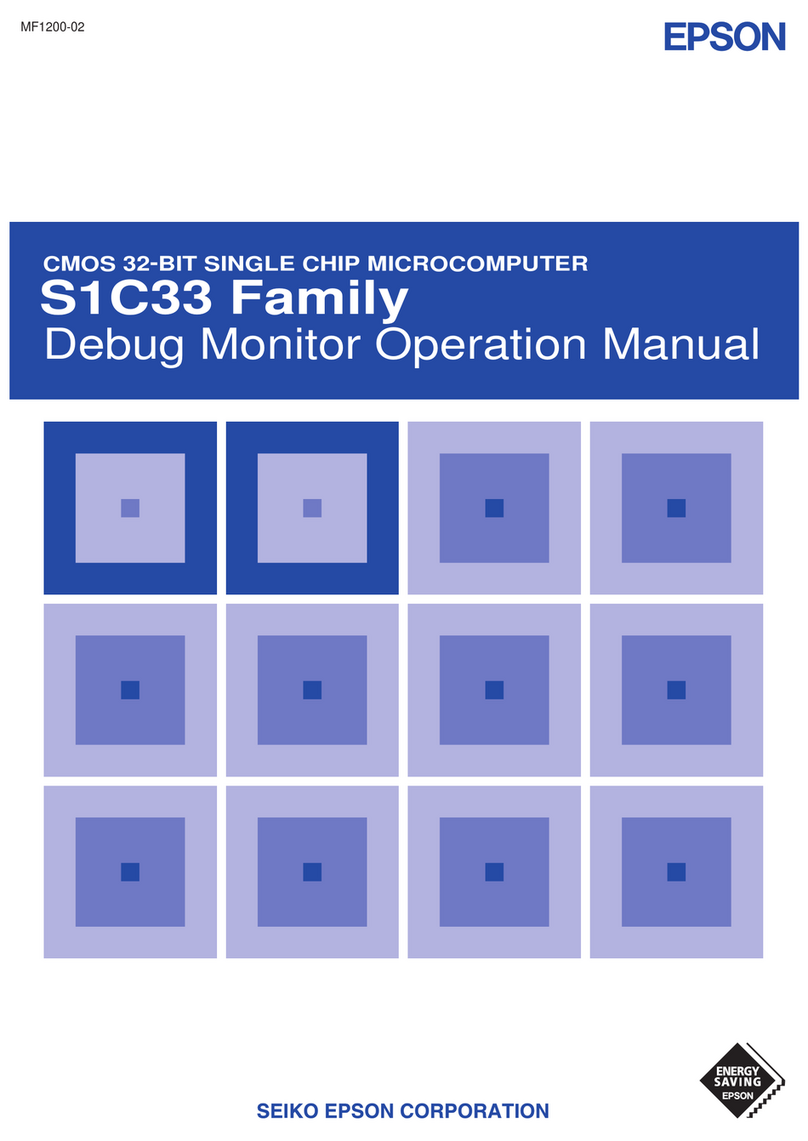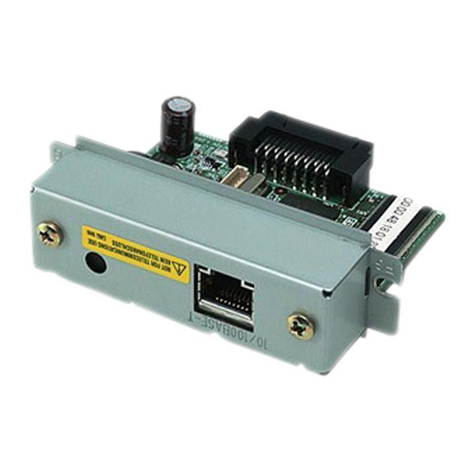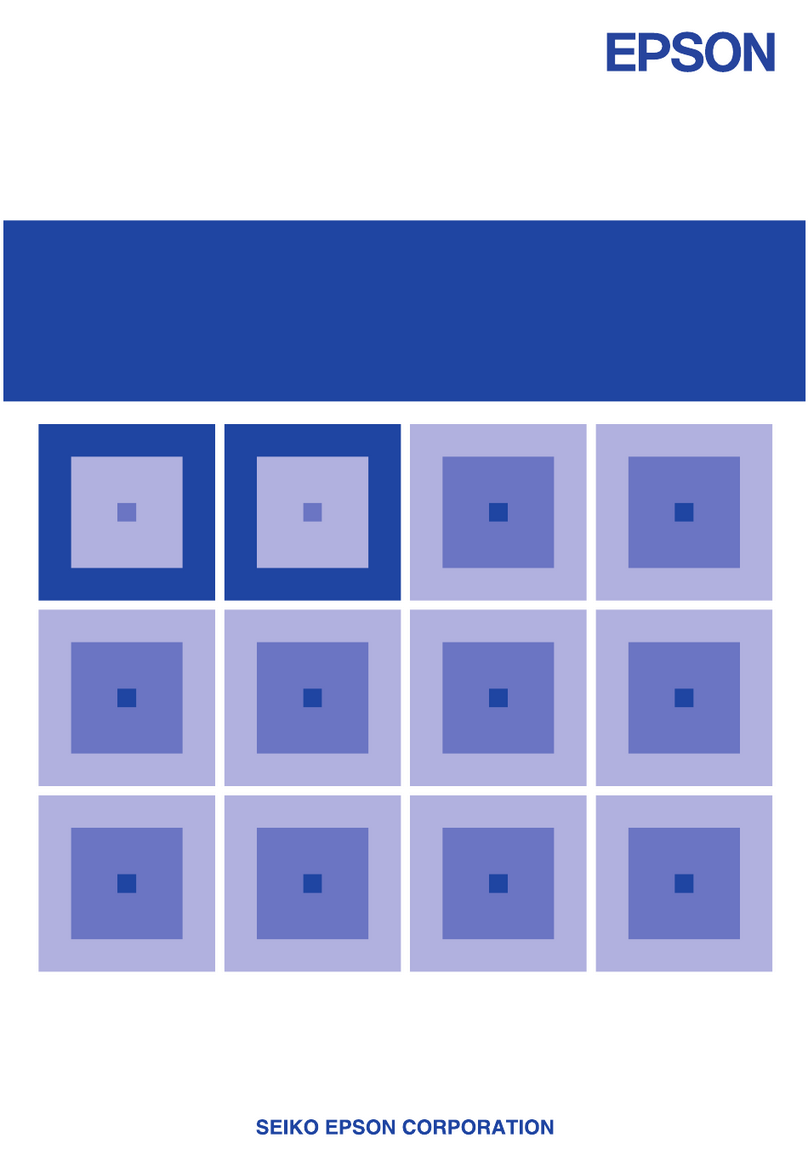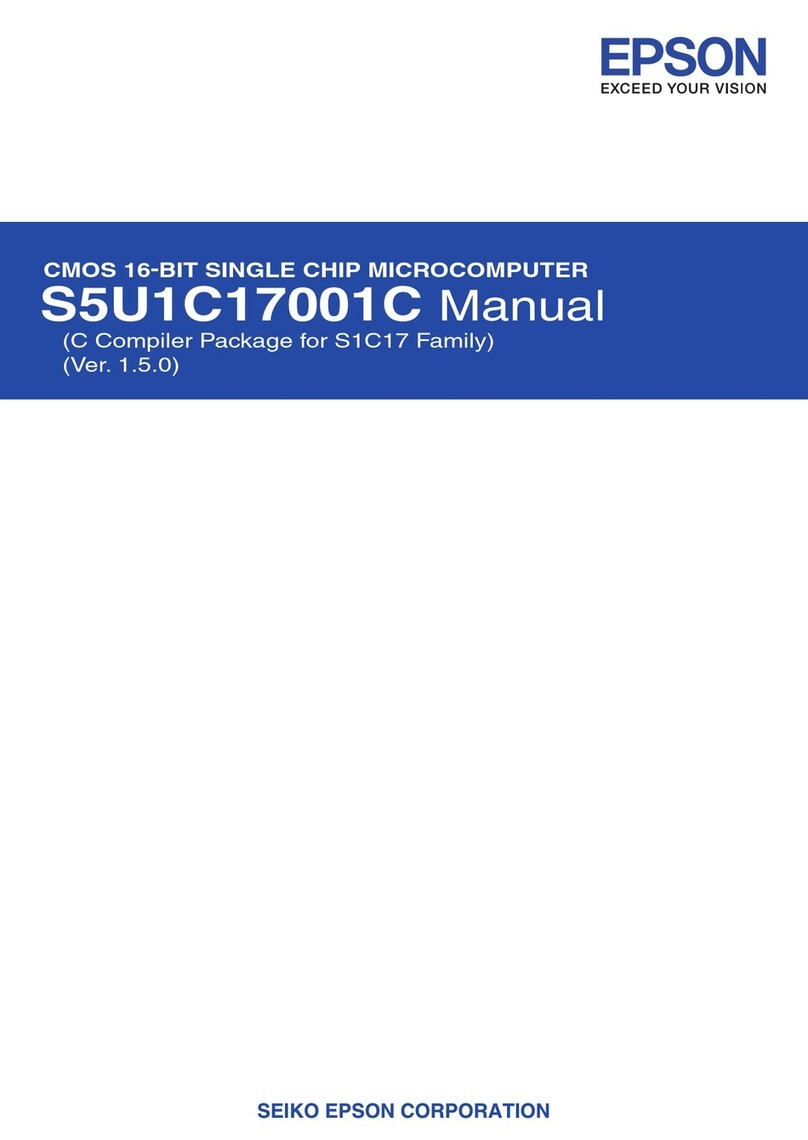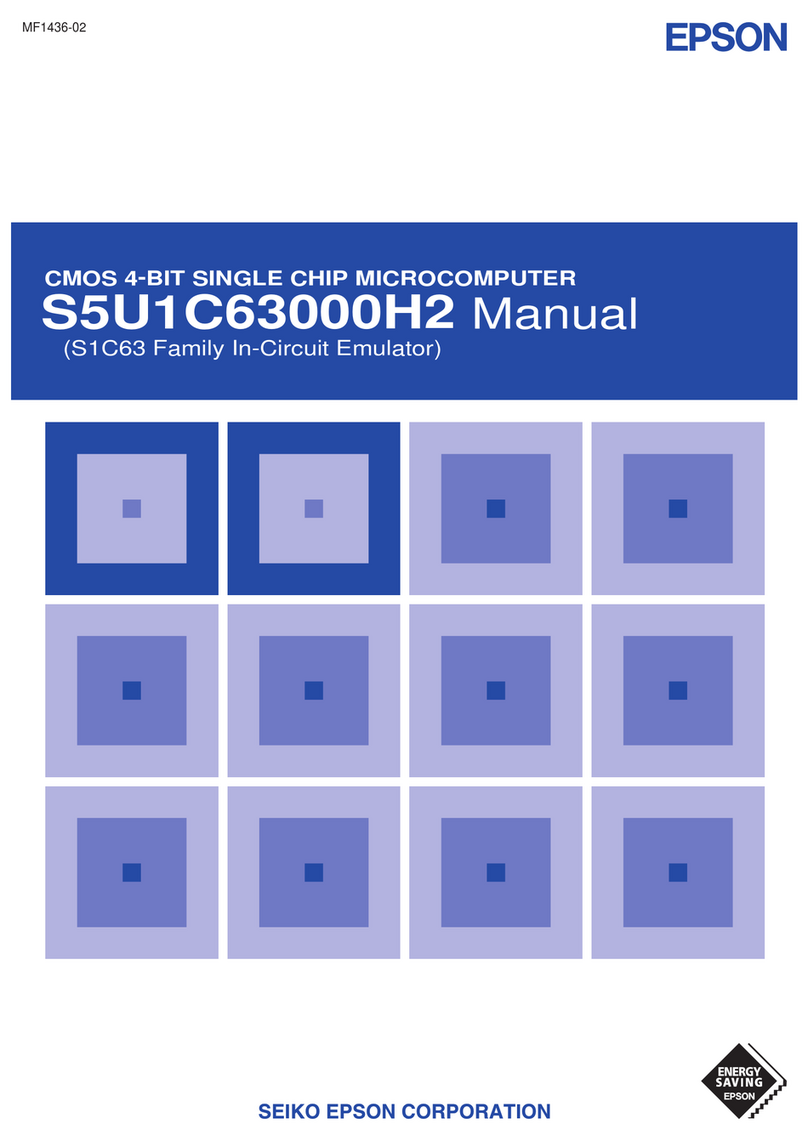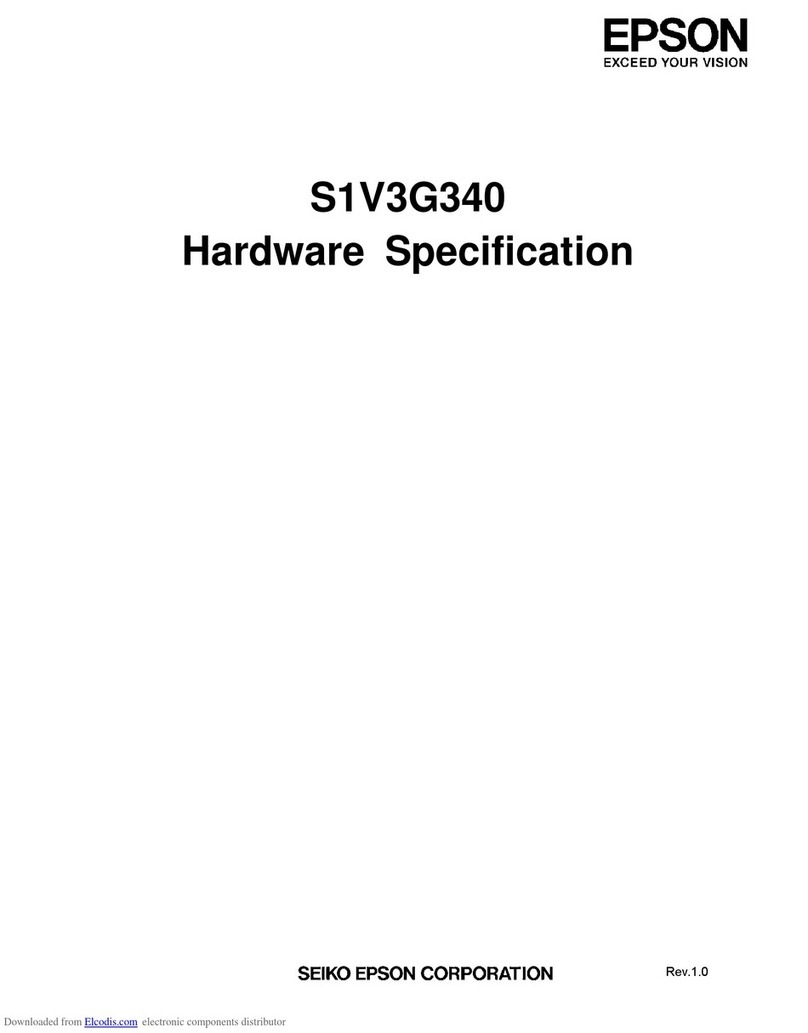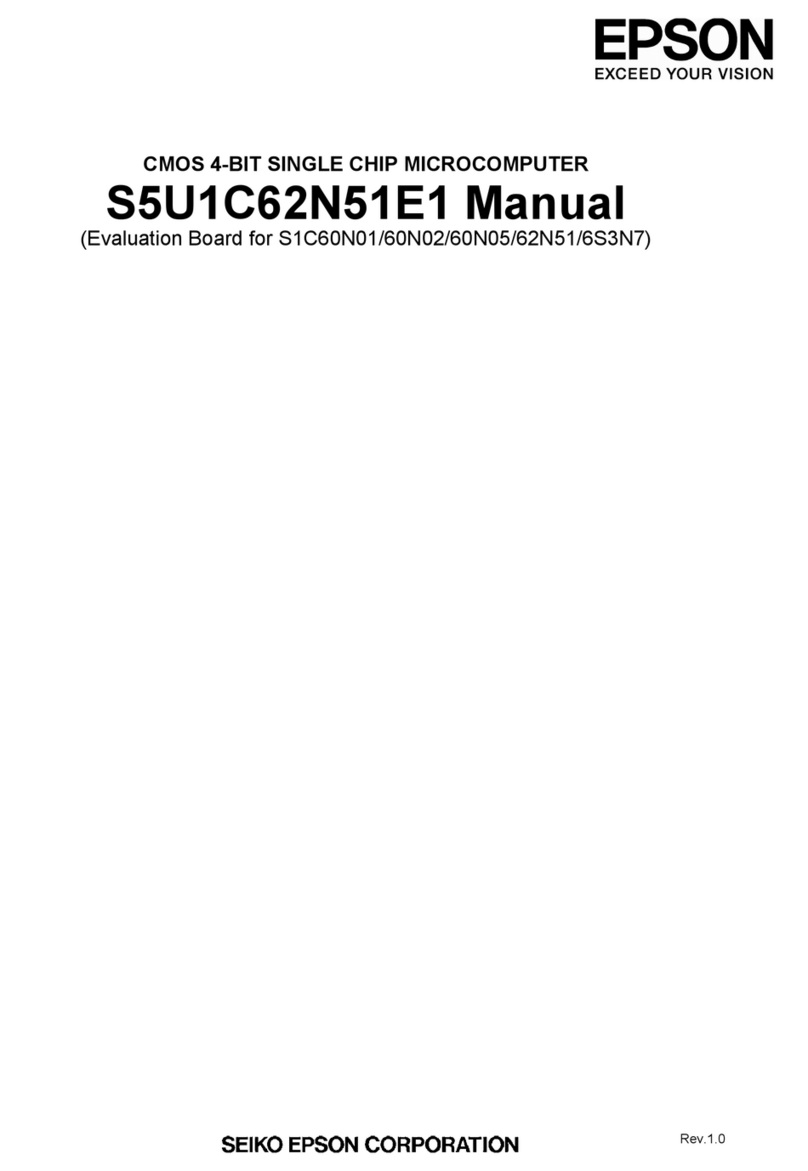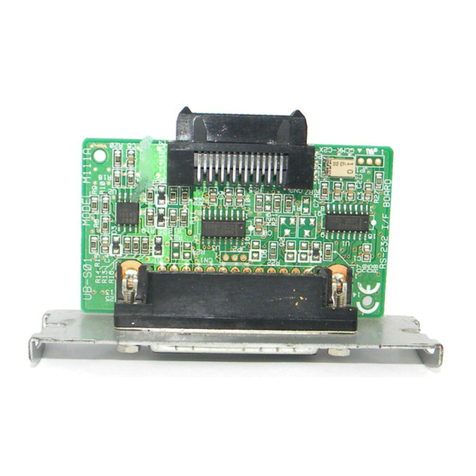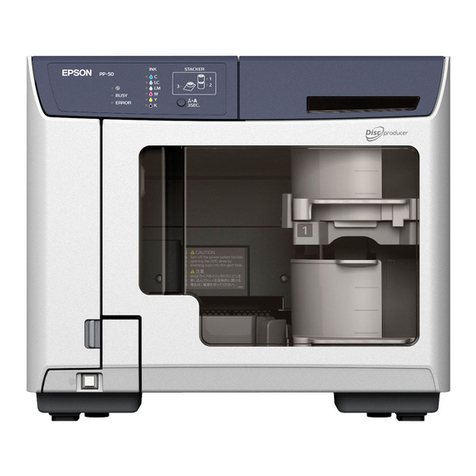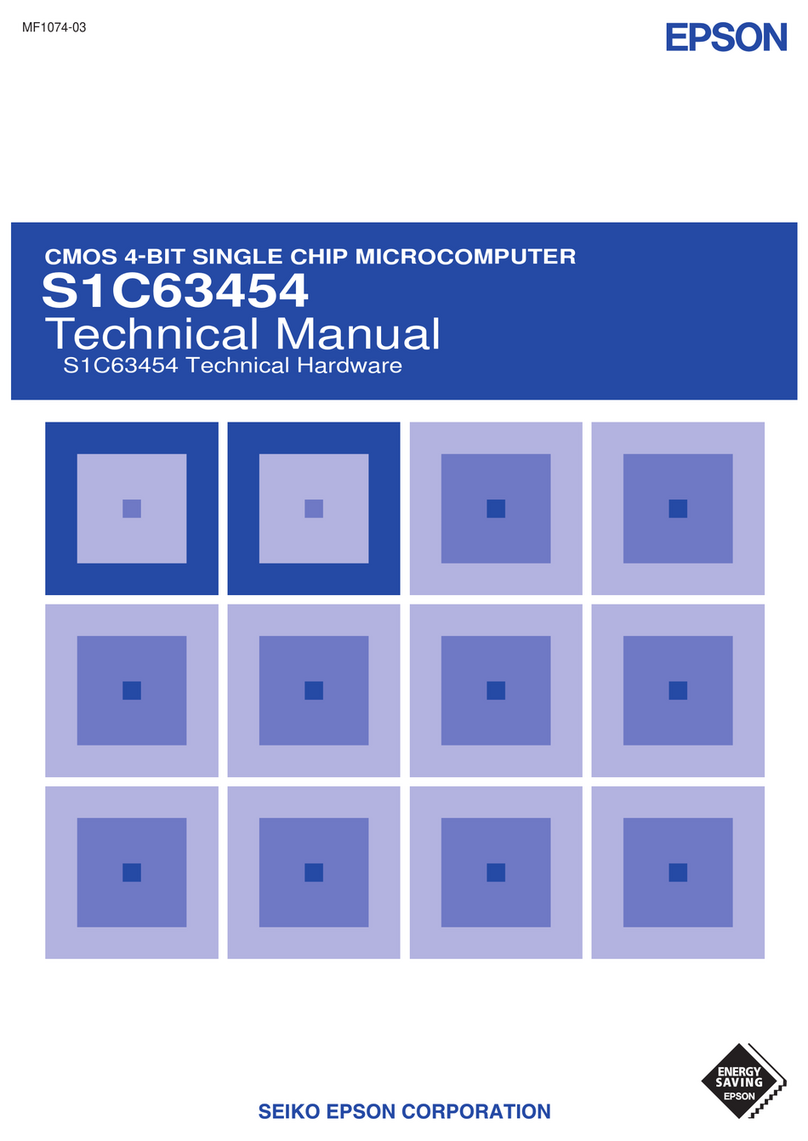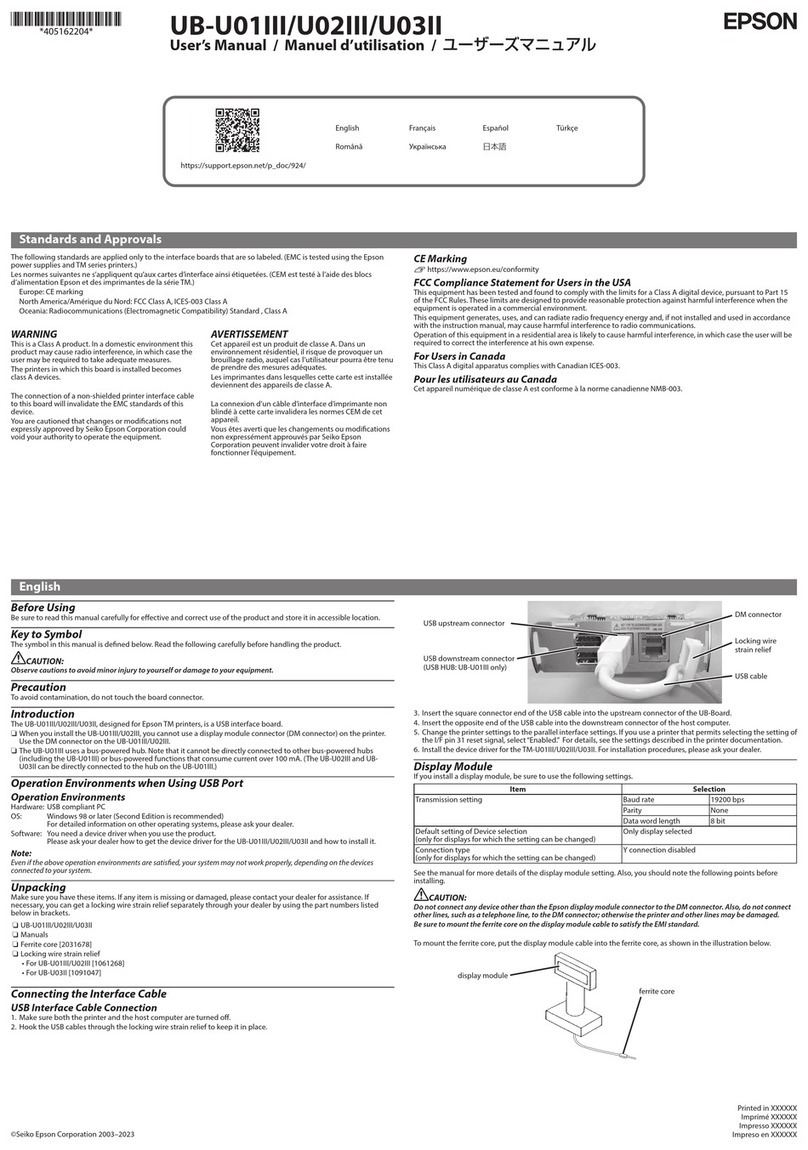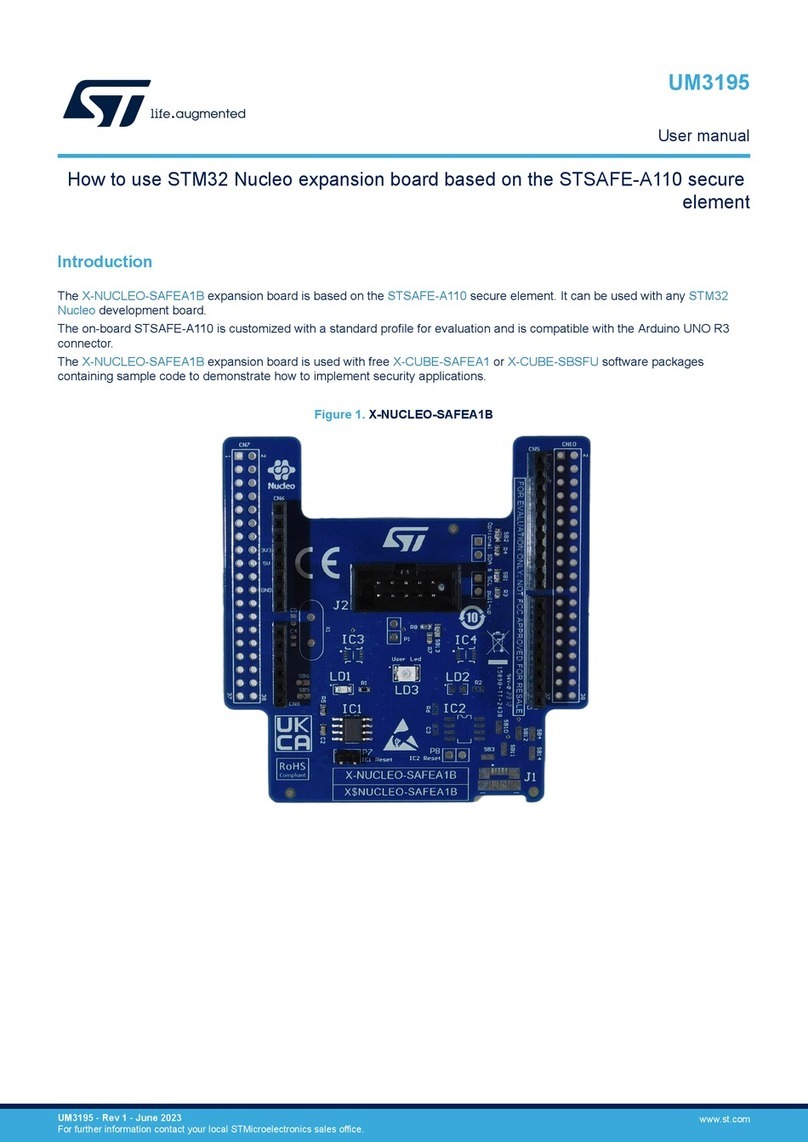
S5U1C60N15E MANUAL EPSON i
(EVALUATION BOARD FOR S1C60N15)
CONTENTS
S5U1C60N15E Manual (Evaluation Board for S1C60N15)
This manual describes how to operate the S5U1C60N15E, a debugging tool for the S1C60N15 4-bit, single-
chip microcomputer.
Refer to the "S1C60N15 Technical Manual" for details of the S1C60N15, and the "S5U1C62000A Manual"
and the "S1C60/62 Family Development Tool Manual" for the development procedure and other
information.
Contents
1 INTRODUCTION ______________________________________________ 1
1.1 S5U1C60N15E Outline ............................................................................................1
1.2 S5U1C60N15E Components ....................................................................................1
2PRODUCT SPECIFICATIONS ___________________________________ 2
3NAMES AND FUNCTIONS OF PARTS ____________________________ 3
3.1 Basic Functions ........................................................................................................ 3
3.2 Functions of Parts .................................................................................................... 3
3.2.1 Front panel ..................................................................................................... 3
3.2.2 Rear panel....................................................................................................... 3
3.2.3 Board (under top cover) ................................................................................. 4
3.3 S5U1C60N15E I/O, LCD and Sub-board Connectors ............................................. 6
4CABLE CONNECTION _________________________________________ 7
4.1 Connection to ICE ....................................................................................................7
4.2 Power Cable Connection..........................................................................................8
4.3 Connection to Target System.................................................................................... 8
5OPERATION METHOD OF S5U1C60N15E ________________________ 9
5.1 Preparation ..............................................................................................................9
5.1.1 Creation of target system................................................................................ 9
5.1.2 Creation and installation of ROMs ................................................................ 9
5.2 Independent Use of S5U1C60N15E ........................................................................ 10
5.2.1 Power on/off .................................................................................................. 10
5.2.2 Debugging ..................................................................................................... 10
5.3 Operation When ICE is Connected ......................................................................... 10
5.3.1 Power on/off .................................................................................................. 10
5.3.2 Debugging ..................................................................................................... 10
6 PRECAUTIONS________________________________________________ 11
6.1 Precautions for Operation.......................................................................................11
6.2 Differences from Actual IC......................................................................................11
